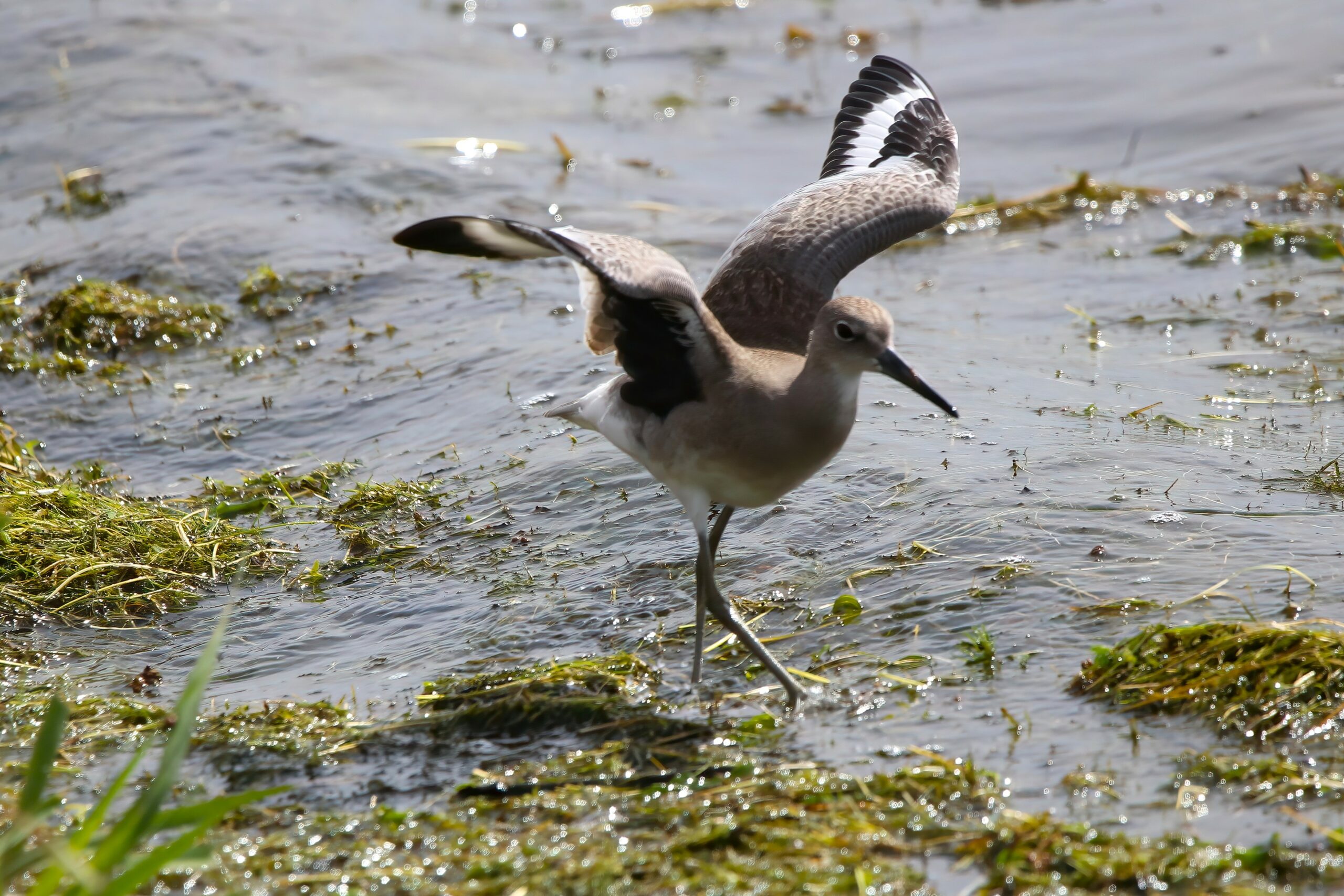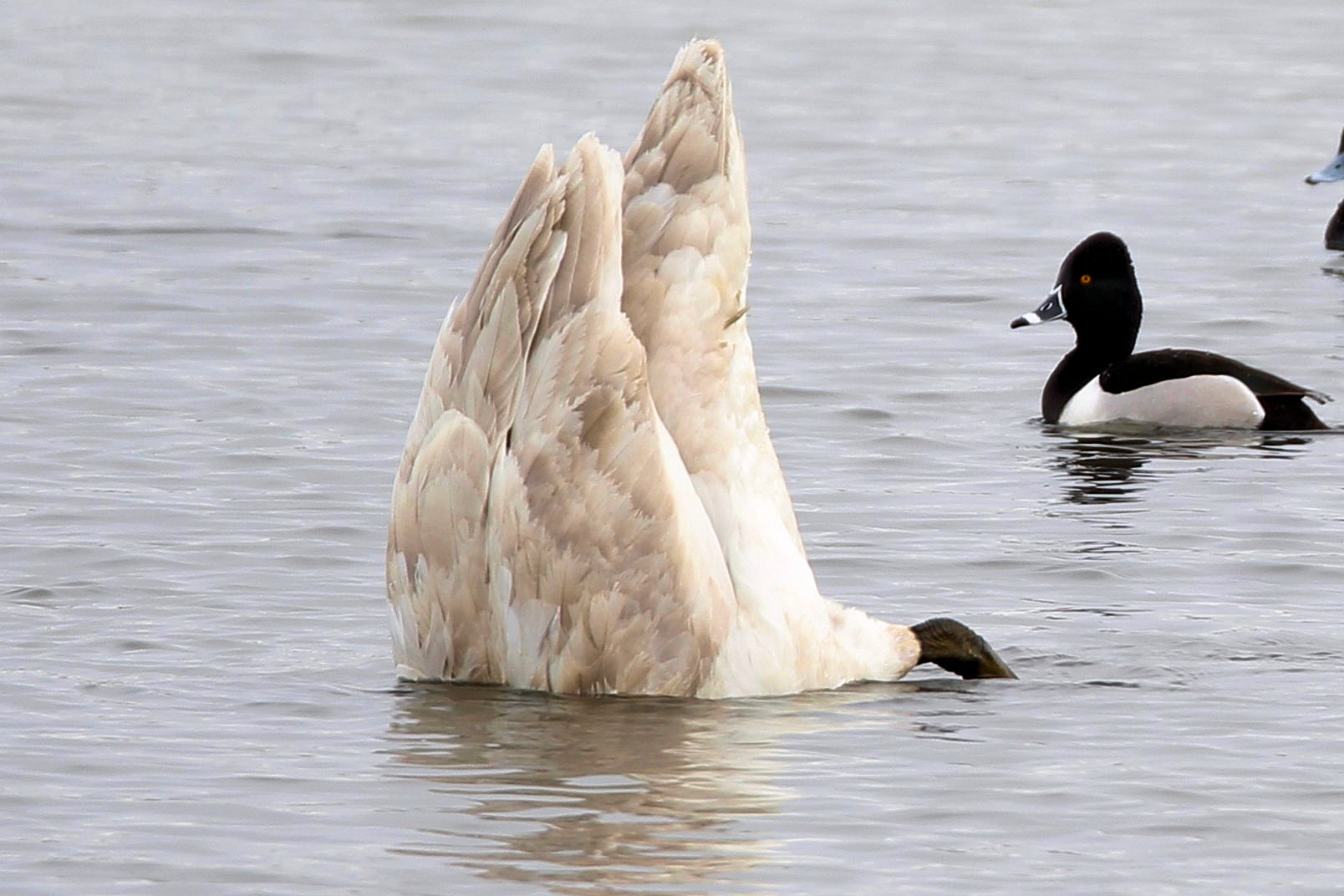An unassuming and at times overlooked group of birds in the birding realm are shorebirds including the largest sandpiper. With most shorebirds sporting various tones of brown or gray, with the odd one having markings or stripes as well as not having ownership of a wonderful birdsong, it’s easy to ignore this birding opportunity. Lake Chestermere , especially when the lake is emptied, provides a silty haven of sorts in the fall. Dog walkers, cyclists and the odd birder can enjoy these quiet birds while being active. The long shoreline grasses on the Cove Beach peninsula provide excellent for the Willet on its May trips north.
One larger shorebird, the Willet, makes its appearance in Lake Chestermere in May, stopping over before moving to suitable mating habitats. About the size of a pigeon propped up on long legs, the Willet weighs in at a hefty 300 grams. Generally gray or brown in hue, Willets catch ones eye when in flight as they display both black and white striping on each wing. During the summer, Willets are mottled with grey, brown and black feather colors, perched on a pair of blue legs.
Often a loner, Willets use their thick, straight and long bills to capture the necessary foods for survival. Willets intake most food using their sensitive bill tip to nab unsuspecting insects, worms and snails. Foraging is normally done along shorelines wading in the shallows and is done both day and night as needed. If you watch the Willet in feeding action, the grace of movement in nabbing insects and their quick ingestion can be truly admired.
Equality of the sexes is demonstrated by Willets in the creation of a new generation. Incubation of the eggs is shared by both parents, with the male Willet spending his nights on the nest. Once the chicks hatch, both parents initially share in raising the young. Females will leave a few weeks early in this process, leaving dear old dad to wrap up the raising of the chicks. Willets share a behavior with the Killdeer when a predator is near. The “drag a broken wing” technique is used to draw the attention of the would be predator and to lure them away from the nesting site. When irritated, Willets have a tendency to walk away from the irritable source with wings spread, while emitting a short, sharp call. If needed, a short flight will suffice to move itself to a new location.
Surprisingly, shorebirds, including the Willet, have been considered to be tasty morsels for humans to consume at the dinner table over a century ago. The renowned John Audubon wrote that Willet eggs were tasty and that the young “grow rapidly, become fat and juicy, and by the time they are able to fly, afford excellent food”. With a weight of 300 grams it would take numerous Willets to make a meal. Thankfully, laws are in place to protect migratory birds from resting on plates in households in North America.
Like all migratory birds, our largest sandpiper heads south to better climes in our winter months. Willets may leave Alberta as early as June, heading for the west coast where a diet of crabs, clams and invertebrates. With the loss of habitat, the North American Willet population is estimated to be approximately 250,000, with the majority living in the west.
Will-It, Won’t It Or Is It A Willet?

In response to Canada's Online News Act and Meta (Facebook and Instagram) removing access to Canada's local news from their platforms, Anchor Media Inc encourages you to get your news directly from your trusted source by bookmarking this site and downloading the Rogue Radio App. Send your news tips, story ideas, pictures, and videos to info@anchormedia.ca.







